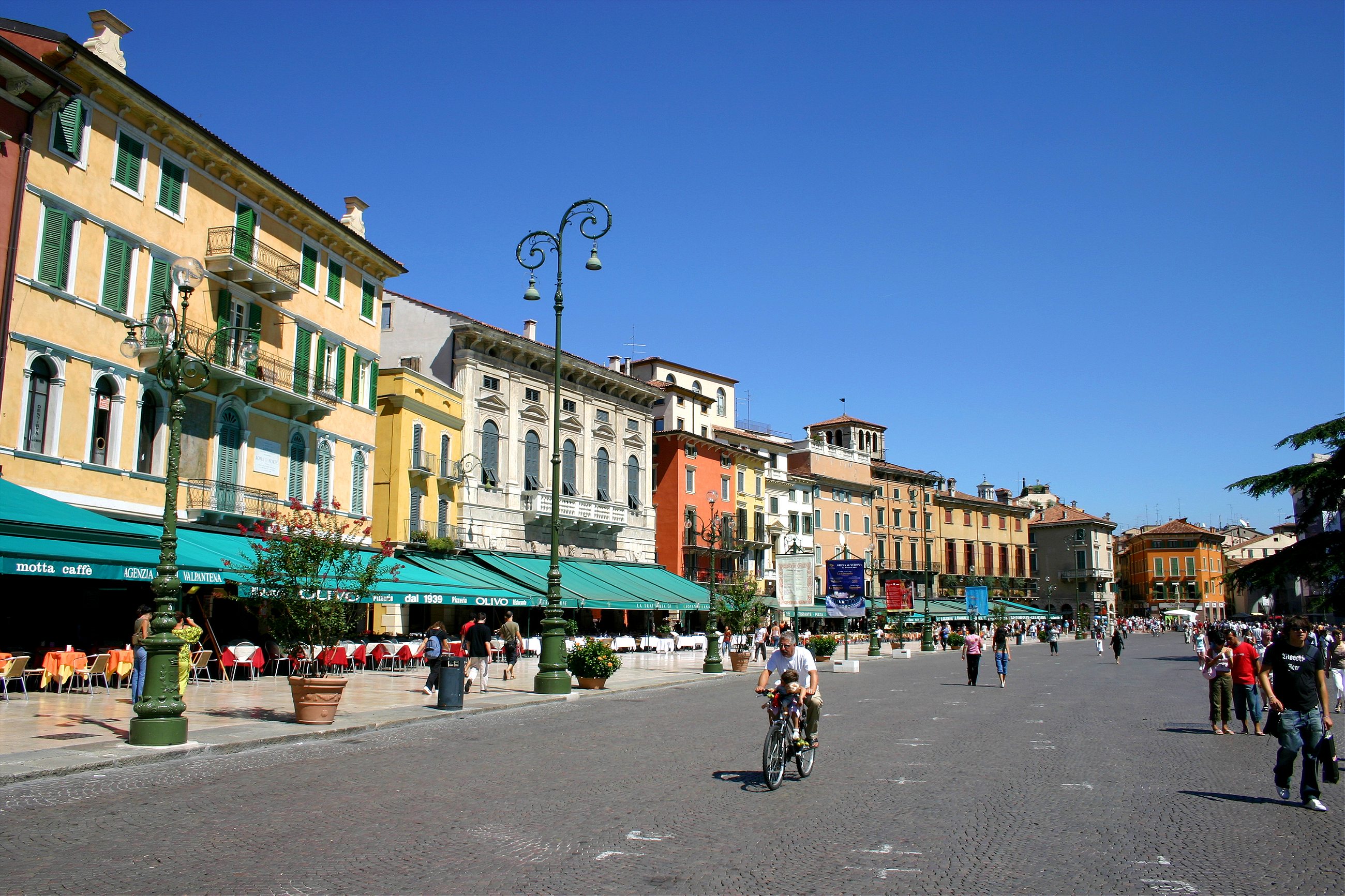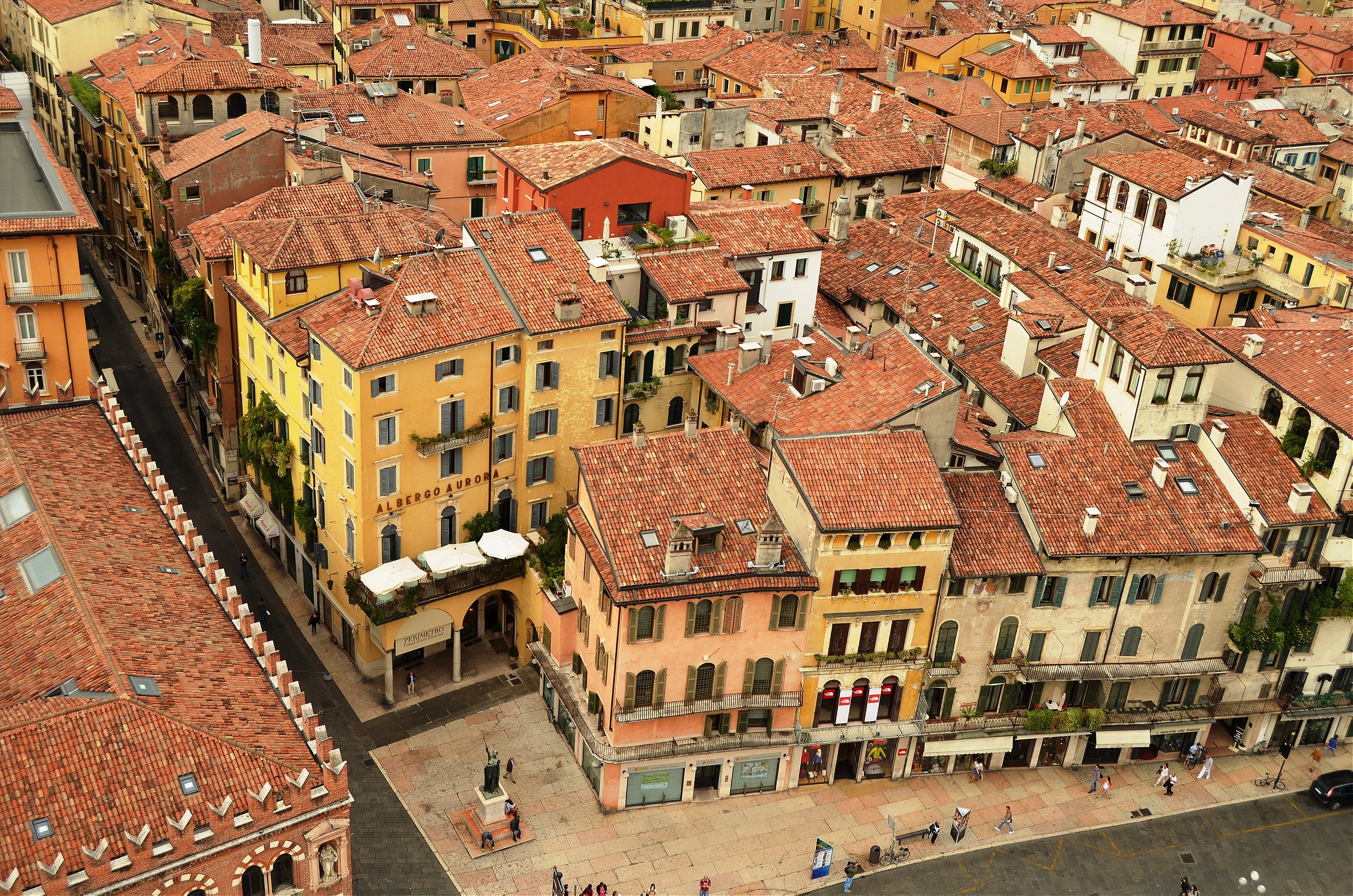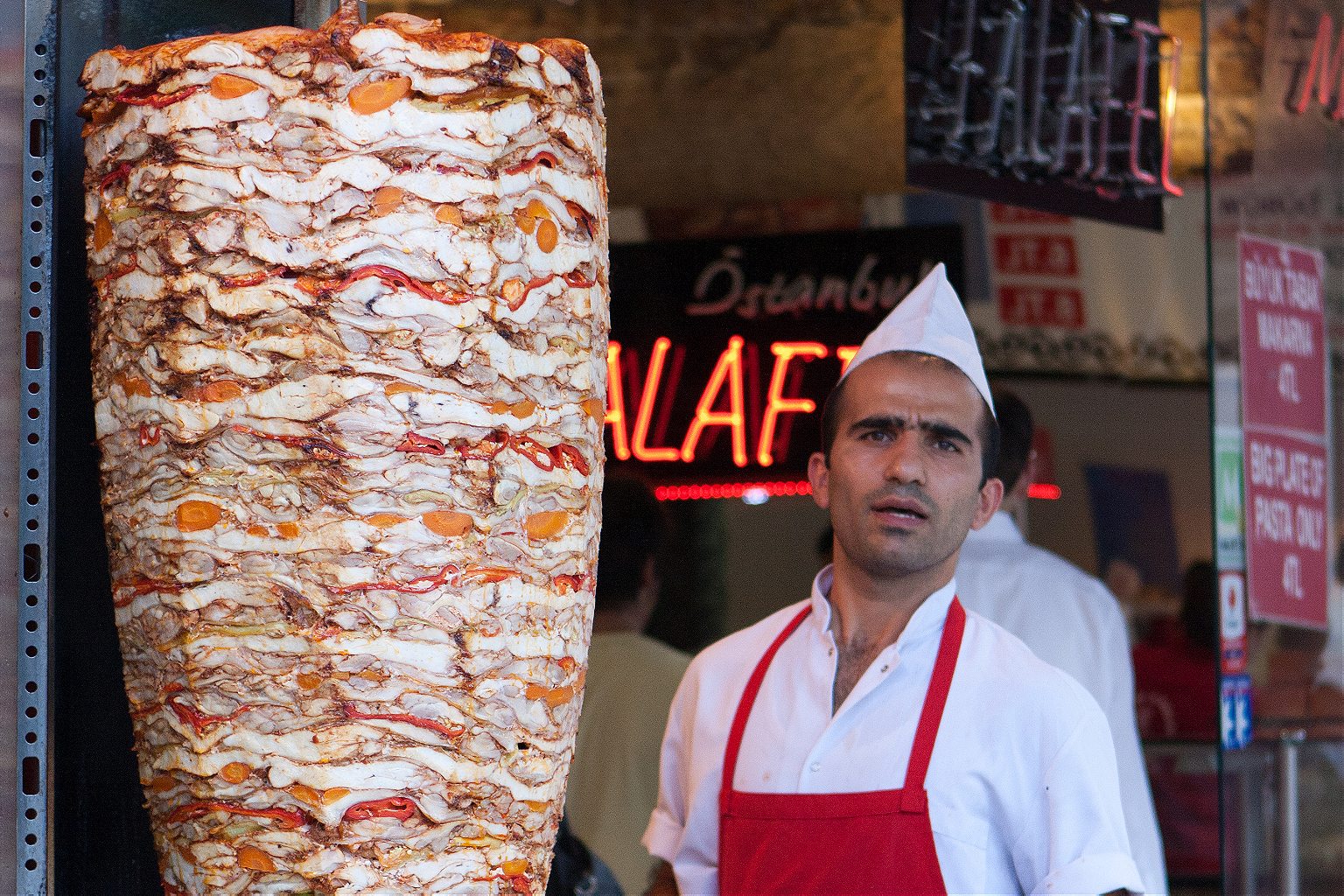A city in Italy embraces the dark side of food protectionism.
Tourists flock to the historic center of Verona to visit the Casa di Giulietta, the fictional home of the fictional Juliet, star-cross’d lover. While “Juliet’s House” dates to the 14th century, most historians say there is almost no evidence linking this house to Shakespeare’s tragic love story. Still, the city charges six euros for visitors to rub a statue of Juliet in the courtyard and to scribble lovelorn graffiti or stick love notes on the brick walls with chewing gum.
Officially, the latter practice has been forbidden. In 2012, Verona’s mayor, Flavio Tosi, decided that the thousands of Post-It notes and graffiti on Casa di Giulietta’s walls had become a mess, “hardly in keeping” with such a beloved place, Tosi said.
This February, Tosi decided once again to take action to preserve Verona’s historic center, a UNESCO World Heritage site. This time, his government moved “to protect tradition and Italian cultural typicality” against certain kinds of “inauthentic” food, which Tosi claimed disrupted the city’s “decorum.” Verona banned all new “kebab and gyro” shops from opening in the city center, explicitly singling out “takeaway ethnic foods” from “oriental and Middle Eastern culture” in the ruling.
I’ve visited Verona numerous times, but I’ve only seen the Casa di Giulietta courtyard through locked gates; this kind of attraction always strikes me as the lamest, tackiest sort of tourism and so I’ve never paid the entrance fee. Yet on my first few visits to Verona, I did follow the tourist trail by eating a few meals at the overpriced cafes and trattorie that ring the nearby Piazza Bra, in the shadow the city’s Roman arena.

The establishments along this stretch have signs emblazoned with pictures of generic pan-Italian dishes: lasagna, pizza, bruschetta, and spaghetti carbonara (none of which are authentic local Veronese or regional Veneto dishes) alongside pictures of hamburgers and “fritto misto.” I remember being acutely disappointed at one of these spots by an embarrassingly poor rendition of spaghetti carbonara that tasted like overcooked, rubbery pasta tossed with scrambled eggs and pork roll. I pushed it aside, paid my outrageous bill, and left. But Verona’s mayor did not target his city’s reliance on tourist traps serving cheap knockoffs of Italian classics. Instead, this gentleman of Verona chose to follow an alarming and growing global trend: He targeted immigrants as a convenient scapegoat.
Food protectionism, of course, is nothing new in Italy. More than 20 percent of Italian food products, in fact, have some form of protected status under European Union law. Neapolitans recently petitioned UNESCO to protect Naples’ traditional pizza-making as an “intangible cultural practice.” These policies and attitudes have trickled down to the local level. Both Florence and Venice have cracked down on fast food and “ethnic” restaurants in order to stave off what the mayor of Venice called the “Disneyfication” of historic city centers. Let’s remember that the beloved Slow Food movement, whose protectionist activities are cheered in enlightened food circles, began as a protest against a McDonald’s being built at Rome’s Spanish Steps in 1986.
Verona’s kebab shop ban, however, moves us a step beyond into a darker area of food protectionism. Tosi was formerly allied with the anti-immigrant Lega Nord party, which not too long ago agitated for the wealthy north to secede from the rest of Italy. (Lega Nord actually ejected Tosi from the party in 2015; he started his own party, ridiculously named Fare!). The kebab-shop ban is on the same political spectrum as the Austrian far-right’s push to build a fence at its border or Donald Trump’s Great Wall.
On my last trip to Verona, in late April, I visited the mayor’s office in the stately Palazzo Barbieri, directly across the Piazza Bra from all those tourist trap restaurants. On the grand steps of the Palazzo Barbieri, young people sat in groups, some of them eating döner kebab wrapped in paper sleeves.

Inside the palazzo, I met with Marco Ambrosini, a member of Tosi’s executive staff responsible for commerce and tourism. Ambrosini, sharply dressed in a navy blue suit and smiling, essentially shrugged his way through our conversation. He said that he was surprised so much had been written about the ban in English-language newspapers. “This regulation has more media attention abroad than here in Italy,” he said. He dismissed the negative publicity as coming from left-wing parties who dislike Tosi.
Ambrosini said that the main reason city government wanted to stop the spread of kebab shops was “the smell of the food and the dirt and trash on the streets.” When I pointed out that the text of the law specifically singles out Middle Eastern “ethnic” takeaway, he insisted, with another shrug, it wasn’t just kebab shops that were banned. “Amsterdam-style chip shops”—the kind of places where hanging tubs of flavored mayonnaise are squirted onto huge piles of French fries in paper cones—had also been banned, along with restaurants that primarily serve fried food. To be clear, in Verona’s city center, the restaurants that fit this description would be kebab shops and chip shops.
“We just want to protect the city from trash in the street. This is a matter of a clean city and no bad smells,” he reiterated. “This was not a racist thing. In the last few years, the same regulation was used to keep a sexy shop from opening in the historic center.”
The big problem is that the old men don’t like other countries’ food
\After my meeting with Ambrosini, I walked back across the Piazza Bra to the Galleria Rivoli, where a neon sign announcing “Kebab—Open” led me into the fluorescent orange interior of Verona Kebab & Pizza. There, I ordered the five-euro lunch special (kebab, soda, chips) and spoke with the owner, 32-year-old Habib Mdal, who wore a bright orange polo shirt like the rest of his employees. Mdal, from Bangladesh, has owned his shop in the city center for 10 years.
“The young generation in Italy likes the kebab,” Mdal said. “The big problem is that the old men don’t like other countries’ food. A kebab shop is a problem for them because kebab is not Italian. Also, they don’t like the competition. I sell döner kebab for three euros, versus Italian panini that cost six euros.”
I mentioned that the city claims kebab shops cause more trash in the streets, and Mdal started to get angry. “My shop is clean,” he said. “Everything here is healthy, including financially.” He grabbed a pizza box in one hand and one of the paper sleeves in which he serves kebabs in the other. He waved the pizza box. “People throw this in the street, too. What about that? What about a McDonald’s bag? But, no, this?”—he furiously waved the döner sleeve—“this is the problem?”
Mdal was by now in full rant. “At these Italian restaurants in the Piazza Bra, they all have German beer. Some sell hamburgers! That is not Italian food! The chip shop is Dutch. You go to the sushi restaurant, and everyone working there is Chinese. All this, but the kebab is a problem? The big problem is kebab?”
An employee at another kebab shop a few blocks away, Abdullah, who said he was from Pakistan, answered Mdal’s rhetorical question. “Kebab is not the problem,” he told me. “The problem is in their hearts.”

I walked out of Verona Kebab & Pizza eating my kebab in the paper sleeve. I sat on a bench in the piazza and watched a guy dressed up as a gladiator roam around the Roman arena, posting for photos with tourists for five euros. On the bench next to me, a trio of older German ladies scarfed down a huge cone of French fries drenched with a bright pink mayonnaise.
The Verona kebab ban should be disquieting to any food enthusiast who has internalized the belief that “traditional” and “authentic” are always best and must be preserved at all costs.
Even Slow Food, whose manifesto may be the original catechism for our faith in food tradition and authenticity, has gradually been changing its approach. A week before my trip to Verona, I spoke to Paolo di Croce, the secretary general of Slow Food International, about the kebab-shop ban and food protectionism in general. “Everywhere in Europe, there is someone, somewhere trying to protect something. But not in the right way,” di Croce said. “If you protect ‘pizza’ generally, you protect good pizza and bad pizza. That’s the opposite of what we want.”
Di Croce told me that Slow Food these days is just as concerned about environmental issues, sustainability, and living wages for farmers and food workers as it is about tradition. “It’s important to understand what it means to say ‘traditional,’” di Croce said. “You can travel around Italy and everything is ‘traditional,’ even if it’s not.”
He pointed out that tomatoes and wheat, which have become the basis of so many iconic Italian foods, are not native to the country and can themselves be seen as examples of what he called “cultural contamination.”
“Without contamination, there is no tradition,” he told me. “Knowledge exchange is at the base of everything. We need to be flexible and learn from each other.”
I finished eating my kebab in the Piazza Bra. I’d had better kebabs and I’d had worse kebabs. How authentic and traditional was this one? I really couldn’t say, since I’ve only ever eaten döner kebab in Germany and Scandinavia. In any case, I left Verona’s tourist center and wandered off into the winding streets, where I found a perfectly authentic Campari and soda (chilled glass, seltzer from an old-fashioned fountain) at Caffe Ammiraglio. Then, I wandered down an alley and ate some excellent cicchetti (essentially Venetian tapas) at one of my favorite spots, the very-inauthentically named Tapasotto.
But before I left the piazza, I crumpled up the paper kebab sleeve. I managed to throw it in a trash can and not the street.
